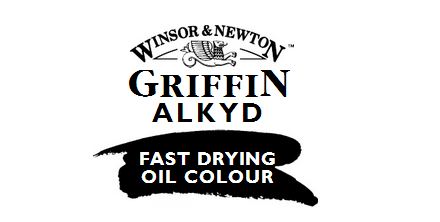An alkyd is a polyester modified by the addition of fatty acids and other components. They are derived from polyols and a dicarboxylic acid orcarboxylic acid anhydride . The term alkyd is a modification of the original name «alcid», reflecting the fact that they are derived from alc ohol and organic ac id s. The inclusion of the fatty acid confers a tendency to form flexible coating. Alkyds are used in paints and in moulds forcasting . They are the dominant resin or «binder» in most commercial «oil-based» coatings. From Wikipedia, the free encyclopedia
Contents |
Manufacture
There are two types of alkyd resins, drying (including semi drying) and nondrying. Both types are typically produced from dicarboxylic acids or anhydrides, such as phthalic anhydride or maleic anhydride , and polyols , such as trimethylolpropane , glycerine , or pentaerythritol . Alkyds are also used in items such as resins and paints.
For the «drying» resins, triglycerides derived from poly unsaturated fatty acids (often derived from plant and vegetable oils , eg linseed oil ).These drying alkyds are cured in air. The drying speed and the nature of the coatings depends on the amount and type of drying oil employed (more polyunsaturated oil means faster reaction in air) and use of metal salts, the so-called oil drying agents . These metal complex thatcatalyze crosslinking of the unsaturated sites.
Alkyd coatings are produced in two processes; fatty acid process and the alcoholysis or mono-glyceride process. Higher quality higher performance alkyds are produced in the fatty acid process where the composition of the resulting resin can be more precisely controlled. In this process an acid anhydride, a polyol and an unsaturated fatty acid are combined and cooked together until the product has achieved a predetermined level of viscosity, penta alkyds are made this way. More economical alkyd resins are produced from the alcoholysis or glyceride process where end product quality control is not as paramount. In this process raw vegetable oil, high in unsaturated component, is combined with additional polyol and heated to cause transesterification of the triglycerides into a mixture of mono- and diglyceride oils. To this resulting mixture acid anhydride is added to build molecular weight of the resin into roughly the same product as in the fatty acid process.However, the alcoholysis process, also known as the glyceride process, produces a more randomly oriented structure. To remove the water produced as a by-product and to increase the reaction rate, surplus phthalic anhydride was added. Water was thus removed with the unreacted acid by heating the bulk to a temperature needed to do this. It meant that the reaction was not as controllable as would be liked. A new process was introduced, in which Xylene was added to produce an azeotrope with the water. This gave greater control at a lower temperature, this also produced resins at a lower viscosity, useful in making high solids paints,this process was known as the AZO process.In both cases the resulting product is a polyester resin to which pendant drying oil groups are attached. At the conclusion of both processes the resin is purified, diluted in solvent and sold to paint and varnish makers. [ 2 ]
Metalcasting
Alkyd or oil-urethane binders are used in metalcasting for the creation of sand -based moulds. The alkyd resin is mixed with a polymericisocyanate and a metallic drier, which speeds the reaction. Unlike other no-bake mould technologies, the process yields no toxic fumes but the moulds need a longer air curing. [ 3 ]
Coating Types
Alkyd coatings are typically sold in three classes: long, medium, and short. These terms represent the relative fraction of drying oil component in the resin. Long oil alkyds have a high percentage of drying oil content and are generally sold as medium duty coatings for the consumer market. Medium oil alkyds have less drying oil and have a higher percentage of large molecular weight polyester backbone. They dry slower and are employed as high gloss coatings and wood finishes. At the bottom end are short oil alkyds where the percentage of drying oil is very low in relation to the base polyester polymer or backbone chain. These coatings will not air dry or harden unless heated. Short oil alkyds are employed as baking enamels for finished metal products, in conjunction with amino /formaldehyde resins. Alkyds are also modified withphenolic resin , styrene , vinyl toluene, acrylic monomers (to make them dry more quickly), and polyurethanes . By adding certain modifiying resins, it is possible to produce thixotropic alkyds for decorative use. The latest alkyds are short oil A/D resins where the oil length is shortened by chain stopping with benzoic acid and now Para Tertiary Butyl Benzoic acid (Alkydal M 48), these have a better controlled molecular weight distribution and better durability. Alkyds for decorative use have extra oil cooked in to lengthen them and to make them more durable. Short oil resins used in stoving enamels are made from non-drying saturated oils or fatty acids. These usually have much higher hydroxyl and acid values, to be able to react with the hydroxyl groups of the amino resins. These mixtures are usually stabilized with amines to prevent gelling on storage.
Because the major components of an alkyd coating, ie fatty acids and triglyceride oils, are derived from low cost renewable resources, this has kept the cost of alkyd coatings very low despite ever increasing cost of petroleum , which is the predominant raw material source of most other coatings such as vinyls , acrylics , epoxies , and polyurethanes . Typical sources of drying oils for alkyd coatings are: linseed , tung ,sunflower oil , safflower oil , walnut oil , soybean oil , fish oil , corn oil , DCO. (made by dehydrating castor oil, which creates a semi drying, conjugated, oil/fatty acid), and tall oil (resinous oil by-product from pulp and paper manufacturing). Non drying/ plasticizer resins are made from castor, palm, coconut oils and cardura (a synthetic fatty, versatic acid). Dehydrated castor oil was at one time the only oil allowed to be used in resin manufacture in India, no edible oils were allowed to be used.
References
- ^ Frank N. Jones «Alkyd Resins» in Ullmann’s Encyclopedia of Industrial Chemistry, Wiley-VCH, Weinheim, 2005. DOI: 10.1002/14356007.a01_409. Published online: 15 January, 2003.
- ^ «Additives for Coatings» JH Bielman, Ed. Wiley-VCH, 2000, Weinheim. ISBN 3527297855 .
- ^ CW Ammen. Metalcasting (New York: McGraw-Hill Professional, 1999) p. 36. ISBN 978-0-07-134246-9
Approximately 200,000 tons of alkyd resins are produced each year. [ 1 ] . The original alkyds were compounds of glycerol and phthalic acid sold under the name Glyptal. These were sold as substitutes for the Copal resins and made varnishes which were much paler in colour. From these, the alkyds we know today were developed.


Deja una respuesta